Is fennel the same as anise? If this is your question, this post on fennel vs. anise will give you not just the answer about these herbaceous plants, but more.
That is not all. You will know appearance for easy distinction, uses, nutritional value, health benefits, and much more.
Contents
- Is fennel the same as anise?
- Star anise vs. anise
- Fennel vs. sweet anise
- Appearance and description
- Culinary uses
- 1. Anise and aniseed uses
- 2. Fennel and Florence fennel uses
- Can you interchange them?
- Aniseed vs. fennel bulb vs. fennel seeds nutritional value
- Fennel vs. aniseed nutrition
- Fennel bulb vs. anise
- Anise vs. fennel health benefits
- 1. Anise health benefits
- 2. Fennel health benefits
- More on Apiaceae
- References
Is fennel the same as anise?
The quick answer is no. Both Fennel (Foeniculum vulgare) anise (Pimpinella anisum) are herbaceous flowering plants in the family Apiaceae or Umbelliferae but are from different genera, i.e., Foeniculum and Pimpinella, respectively. Therefore, fennel and anise are not the same things.

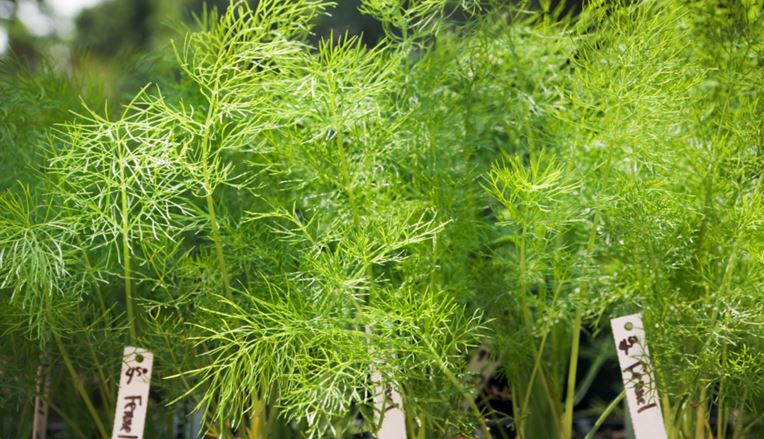
However, fennel and anise (aniseed or anix) are used in culinary and have a similar flavor resembling licorice and star anise because they have anethole. Anethole or anise camphor gives them the characteristic aroma, and anise tends to have a more robust flavor.
Also, they are both from the Mediterranean region, with anise coming from the eastern Mediterranean region and Egypt, while fennel is from the southern Mediterranean region. However, these two have been naturalized in other places.
Finally, people use anise seeds or aniseeds in culinary, making it more of a spice than a herb. On the other hand, fennel is both an herb (foliage), a vegetable (bulb type), or a spice (seeds).
Star anise vs. anise
Kindly note that anise is not the same as star anise (staranise, star aniseed, Chinese star anise, badian, or star anise seed). However, these two have a closely resembling flavor, as already noted. Refer to anise vs. star anise.
Fennel vs. sweet anise
In some culinary materials, the term sweet anise may refer to the bulb and fronds of fennel because they have a milder and more delicate flavor. However, this isn’t correct. Consider it a mislabeling.
Appearance and description
Before we look at the culinary uses, it is time to compare fennel and anise, telling you the type of plants they are, their appearance (size, leaves, stems, flowers, and fruits). We will also give you anise and fennel pictures to help clarify everything, and you will be able to see the differences.
| Fennel | Anise | |
| Type of plant | Perennial hardy herb | Slow growing annual |
| Size | Larger. Anise grows up to 4 to 8 feet tall and 18 to 32 inches wide. | Smaller. It can reach about two feet but is typically 18 to 24 inches tall and about the same size wide. |
| Leaves | Fennel has glaucous (pale gray or bluish-green) green leaves that are about 16 inches long. They are feathery, i.e., they have numerous thread-like segments or filiform, which are about half a millimeter wide. The leaves somewhat resemble those of dill, but they are much thinner. | Anise has bright green foliage. The leaves towards the base are simple, round, shallowly lobed, and have long stalks. They measure about ⅜ to 2 inches (1cm to 5cm) in size. However, those on the upper part of the stem are compound, i.e., feathery pinnate, and they form many small leaflets, and their stalks are shorter. |
| Stems | 4-5 round hollow stems | Compound stems with shorter stalks |
| Flower | Fennel umbels (umbrella-like) are about 2 to 4 inches wide, and each has up to 50 tiny yellow or white flowers. | Anise has dense umbels with yellow or white flowers measuring about ⅛ of an inch |
| Fruit | Fennel has a single-seeded hairy, ridged, or grooved ovoid hay-colored fruit measuring 3⁄16 to 3⁄8 inches long and about half or less wide. | Oblong fruit that measures 1⁄8 to 1⁄4, often referred to as aniseed. The fruit is often confused as the seed and has grayish-green color. |
Anise vs. fennel pictures
Leaves
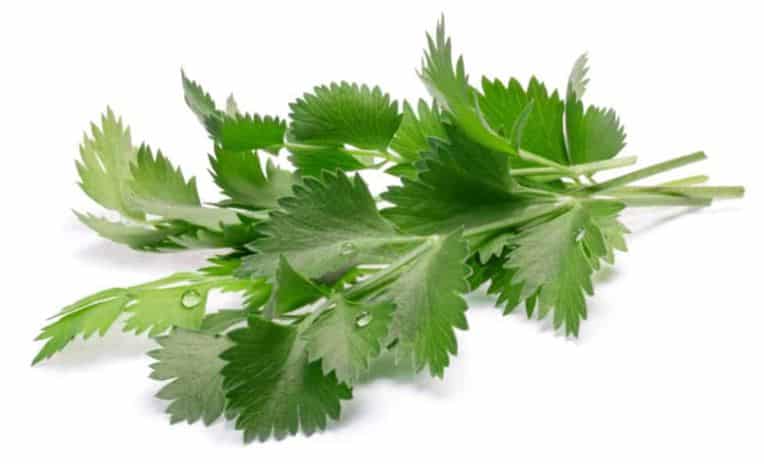

Flower
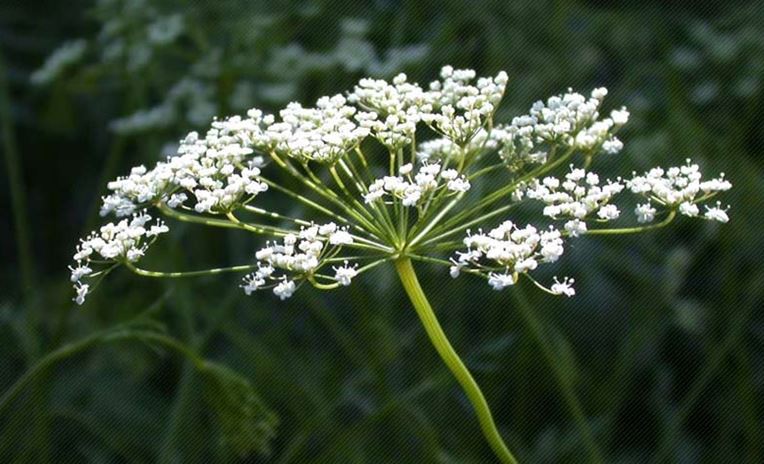
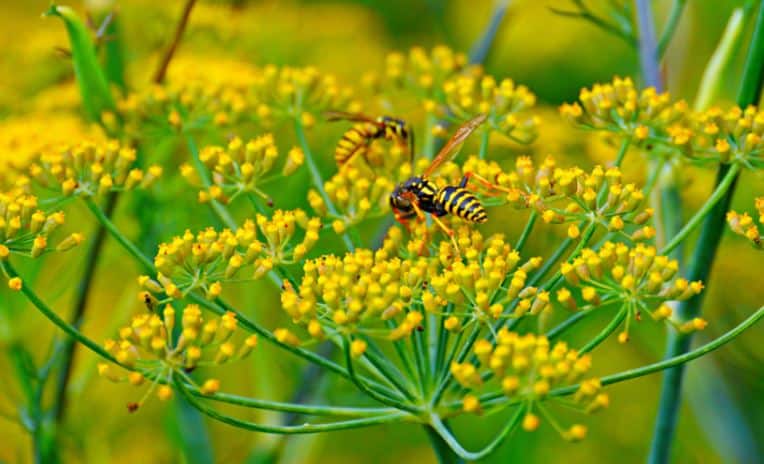
Seeds
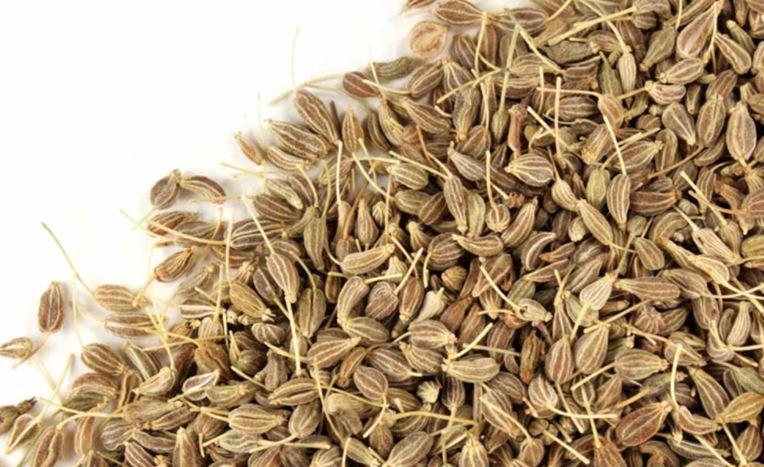
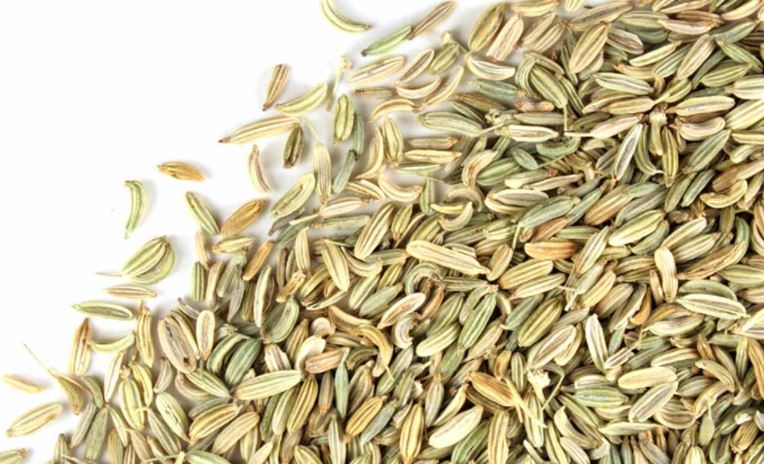
Culinary uses
How are fennel and anise used in culinary? Which are some of the foods it flavors, and which parts of the plant do people use?
1. Anise and aniseed uses
People cultivate anise mainly as a spice due to the flavorful seeds. Usually, they grind and use them alone or with other spices to make tisanes and teas, including in Mexican atole de anís (hot chocolate).
Also, it has uses in making confectionaries such as black jelly beans, aniseed twists, British aniseed balls, Australia humbugs, Italian biscotti, Italian pizzelle, etc.
Furthermore, people in Pakistan and India take anise spice to boost digestion after eating. In Italy, it flavors Italian pepperoni and sausage, among many other uses in various parts of the world.
Finally, besides aniseed, you can add anise leaves to salads, dips, or cheese spreads or use the roots and stems to give stews and soups a mild licorice-like taste. Here it serves as an herb and not spice.
Other non-culinary uses:
- Make anise essential oil
- It is food for some moths and butterflies such as lime-speck pug and wormwood that belong to the order Lepidoptera.
- Anise’s application in traditional European herbal medicine reduces flatulence (carminative effect) and cures sleeplessness. Also, it gave fresh breath (chewed with alexanders and a little honey), treat asp bites (added to honey), and make the water of anise.
- Turkish medicine as a tranquilizer, diuretic, and appetite booster
- As a fishing lure to attract fish or drag hunting (anise-scented liquids).
2. Fennel and Florence fennel uses
Fennel is a herb, vegetable, and spice, depending on how you use it. There are two types of fennels: one sold as a spice and the Florence fennel or Finocchio.
Finocchio is a fennel bulb and is what you commonly find at most grocery stores. People buy it because they want to enjoy the crispy swollen, bulb-like stem, which they eat as a vegetable (cooked or raw).
Unlike anise, people use leaves, flowers (most potent but expensive), and fruits in culinary in various ways worldwide.
For instance, anise greens or leaves garnish foods, flavor salads, sauces, soups, or eaten as celery (both the young shoots and leaf bases). You will find both fresh and dried leaves and, in some parts, people eat the leaves as a vegetable alone or together with other foods.
The fruits serve as a spice in sweet desserts and cooking. Also, some people, especially in India, eat these fruits raw or with a sweetener.
You will find fennel in diverse cooking, Gujarati or Kashmiri cuisines, or Italian sausages, etc.
Other uses
- It is an ingredient of absinthe spirit, akvavit, and some toothpaste
- Medicinal uses in Chinese traditional medicine
- Some Indians eat roasted seeds to freshen their breath and to aid digestion.
- Foeniculum vulgare Nigra or Purpureum is a popular garden decorative plant
Can you interchange them?
Whether you can interchange anise and fennel depends on the dish you are preparing and whether you are using their seeds. Their flavors are similar, but aniseed is a more robust flavor.
Also, if you are talking about fennel bulbs, you cannot use them the same way you use aniseed which is a spice, not a herb.
Aniseed vs. fennel bulb vs. fennel seeds nutritional value
How do the nutrients of anise compare with those of fennel? Let us see what each has and make a few talking points. Here is a comparison of nutrients between aniseed, fennel seeds and bulb data source USDA.
| Fennel | Anise | Fennel bulb | |
| Energy | 345 kcal (1440kJ) | 337 kcal (1410kJ) | 31 kcal (129kj) |
| Proteins | 15.8g | 17.6g | 1.24g |
| Fats | 14.9g | 15.9g | 0.2g |
| Carbohydrate | 52.3g | 50g | 7.9g |
| Dietary fiber | 139.8g | 14.6g | 3.1g |
| Sugars | - | - | 3.93g |
| Equivalent vitamin A | 7μg (135 IU) | 16μg (311 IU) | 48μg (963 IU) |
| Beta-carotene | - | - | 578µg |
| Lutein zeaxanthin | - | - | 607µg |
| Vitamin B-1 (Thiamin) | 0.408mg | 0.34mg | 0.01mg |
| Vitamin B-2 (Riboflavin) | 0.353mg | 0.29mg | 0.032mg |
| Vitamin B-3 (Niacin) | 6.05 mg | 3.06mg | 0.64mg |
| Vitamin B-5 (Pantothenic acid) | - | 0.797mg | 0.232mg |
| Vitamin B-6 | 0.47mg | 0.65mg | 0.047mg |
| Folate (Vitamin B-9) | 97 μg | 10mg | 27μg |
| Vitamin B-12 | 0 | 0 | 0 |
| Vitamin C | 21mg | 21mg | 12mg |
| Vitamin D | 0 | 0 | 0 |
| Vitamin E | - | - | 0.58mg |
| Vitamin K | - | - | 62.8μg |
| Calcium | 1200mg | 646mg | 49mg |
| Iron | 18.5mg | 37mg | 0.73mg |
| Magnesium | 385mg | 170mg | 17mg |
| Phosphorus | 487 mg | 440mg | 50mg |
| Potassium | 1690 mg | 1440mg | 414mg |
| Sodium | 88 mg | 16mg | 52mg |
| Zinc | 3.7mg | 5.3mg | 0.2mg |
| Cupper | 6.53mg | 0.91mg | 0.066mg |
| Manganese | - | 2.3mg | 0.191mg |
| Selenium | - | 5µg | 0.7mg |
| Water | 8.81g | 9.54g | 90.2g |
Fennel vs. aniseed nutrition
Both fennel seeds and aniseed are rich sources of vitamin B-1, B-2, B-3, B-6, and C, calcium, iron, magnesium, manganese, phosphorus, potassium, and zinc, i.e., they have more than 20% daily value or DV.
Also, both these seeds are energy-dense, are high in protein, fiber, carbohydrates. Additionally, aniseed is a rich source of manganese and a good source of vitamin B-5, i.e., it has a 10-19% DV.
However, while very nutritious, you probably use only a tiny amount, just as you use other spices.
Fennel bulb vs. anise
Aniseed is by far nutritious and is high and rich in the nutrients you have mentioned above. On the other hand, fennel bulb or sweet anise isn’t a nutrient-rich as the seeds. However, it is rich in vitamin K and a source of vitamin C and will provide hydration (high in water).
Anise vs. fennel health benefits
Do anise and fennel have any health benefits? Let us look at each.
1. Anise health benefits
Anise is available in powder, oil, or extract form and has many health benefits. According to Healthline, some of the health benefits that these seeds have included the following:
- Aniseed is nutrient-rich, as we have seen above, even if the amount taken is small.
- Has antidepressant properties that may help reduce depression symptoms.
- Animal studies show it reduces stomach acid, making it possible for it to prevent stomach ulcers.
- Its potent antimicrobial activities may prevent fungi and bacteria growth and, consequently, infections
- Since it mimics estrogen effects, it may help reduce some of the menopause symptoms
- Help balance body sugar level since it has anethole, the primary essential oil.
- Aniseed has anise oil which may reduce inflammation resulting from chronic diseases like cancer, diabetes, or heart disease
Most recipes use a small amount of anise or dosage, about 4-13g. However, if you are using aniseed for medicinal purposes, keep the dosage small, between 900mg to 9g.
Side effects are rare. However, anise may cause allergic reactions, or its estrogen-mimicking properties may worsen hormone-sensitive conditions, such as endometriosis or breast cancer.
2. Fennel health benefits
Some of the benefits of fennel include the following:
- Like anise, it is highly nutritious
- It has potent antioxidants, some of which have anti-inflammatory compounds. They will help reduce the risk of heart diseases, cancer, and obesity by neutralizing free radicals.
- May reduce appetite since it has anethole
- Good for your heart
- Has cancer-fighting properties
- Its galactogenic properties may benefit breastfeeding mothers because it increases milk secretion
- May relieve menopausal symptoms
Always use fennel in moderation since sources with concentrated levels such as extracts and supplements may result in some side effects if taken in massive amounts.
Possible risks or side effects include allergies, may interact with estrogen pills, among other issues.
More on Apiaceae
Family Apiaceae, also known as the parsley, carrot or celery family or umbellifers) other aromatic flowering plants like celery, cumin, dill, parsley, caraway, ajwain, carrot, coriander, see holy, lovage, chervil, parsnip, and so on.
References
- https://fdc.nal.usda.gov/index.html

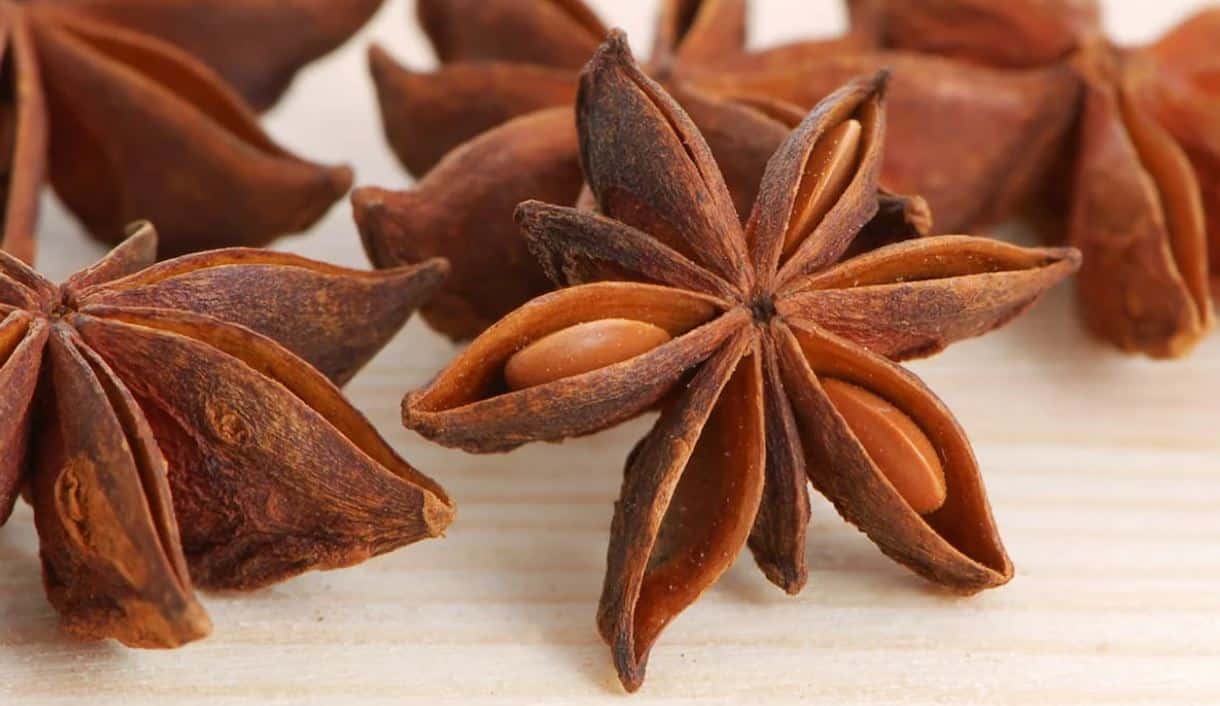

Leave a Reply